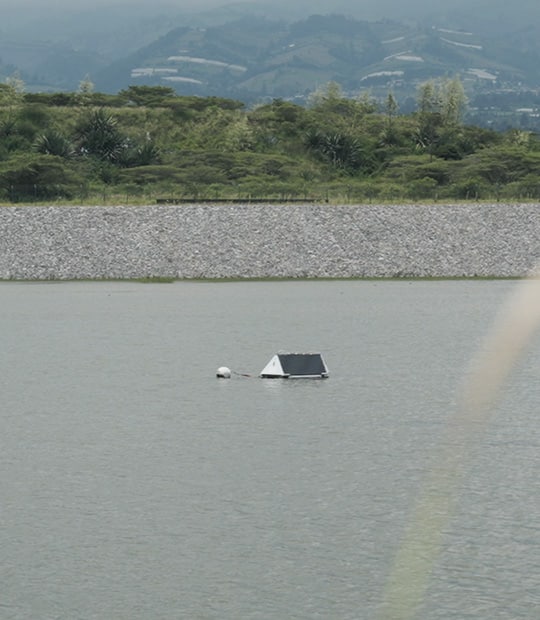Fresh water is reaching a breaking point. The question that is being asked by cities, farms, and others is similar: how can we maintain clean, dependable, and affordable? The core process of the solution is water technology, a viable combination of environmental science and technology. Small sensors, stronger filters, and chemical-free methods now give managers live information and real options. When technology in water management can identify a problem hours before it becomes a crisis, maintenance stops being guesswork and becomes informed stewardship. It’s a subtle shift, one that quietly changes how communities protect a resource we all depend on.
Understanding Water Technology:
Water technology includes machinery and systems that collect, treat, transport, and protect water. The category ranges from proven filtration devices to modern, data-driven systems that reveal what happens below the surface in real time. The important shift is simple: we are moving from “fix it when it breaks” to “see it coming and act early.” Affordable sensors and remote dashboards now allow operators to monitor turbidity, nutrients, and oxygen levels by the minute using tools such as the LG Sonic Monitoring Buoy. This transformation defines how experts use water technology to manage water quality. Engineers rely on this data stream to adjust pumps, reduce chemical dosing, and schedule maintenance more intelligently.
Smart water management (SWM) represents a transformative shift in urban water governance, integrating advanced digital technologies. When engineers combine ecology and engineering, they create solutions that better support ecosystems. When smart policy and local knowledge work together with technology, they can scale water management sustainably—from a village borehole to a city reservoir.
Modern Innovations in Water Treatment
Modern water treatment plants no longer operate solely on schedules and spot samples. Instead, they respond continuously to real-time signals. Current water treatment technology connects sensors, controller logic, and operator insight to ensure that plants react to change proactively rather than waiting for issues to occur.
Minute-by-minute probes measure turbidity, conductivity, and nutrient loads. Control systems then adjust aeration, dosing, and filter backwash accordingly. This approach delivers tangible results: operators use fewer chemicals, maintain more stable water quality, and prevent unplanned downtime. What changed is not a single gadget but a new way of working. Data feeds simple forecasts, and operators use those to schedule interventions, not because a regulation says so, but because the data proves it will save money and time. That’s why technology in water treatment matters to engineers and water managers alike.
When individuals mention water treatmbioent technologies, they refer to membrane filtration, UV disinfection, and the emergent technologies, which include ultrasound and algae control. The most useful tools go hand in hand with analytics: the sensors will inform you where the issue begins, and the tech will repair it at the lowest cost point to do so. This union between water treatment and technology is placing investment in large tanks to more intelligent measurements. Concisely, the current systems are cleaner, more efficient, and far predictable than the previous reactive model ever was.
Industrial and Environmental Applications:
Outside the treatment works, the demands on water systems are varied and immediate. Factories need steady cooling water; mines must manage process and runoff; towns want reservoirs that stay usable year after year. That’s where water technology moves from lab bench to site, and where solutions make a measurable difference. Small sensor networks, ultrasonic controllers, and simple automation prevent problems from escalating into costly downtime.
Take industrial cooling basins, for example. Biofouling was previously fought with frequent chemical applications and heavy manual cleaning. Today, operators combine ultrasonic control with real-time monitoring to keep systems cleaner for longer, a practical water technical win that saves energy and parts. It’s the same logic in natural lakes: timely data lets managers target nutrient sources rather than treat symptoms.
What ties these successes together is a mindset often called water innovation. It’s not about a single device but about joining measurement, modelling, and modest interventions so wins compound across a whole system. In practice, water innovation reduces waste, protects aquatic life, and makes regulatory compliance less of a scramble. And because these approaches scale, small pilot projects can turn into regional programs that change outcomes at a landscape level, the sort of water innovation that quietly shifts risk away from people and infrastructure.
Case Study: Mariscal Sucre Airport (Quiport), Quito, Ecuador
Quiport, the operator of Mariscal Sucre International Airport in Quito, deployed LG Sonic’s solar-powered MPC-Buoy to address persistent algal blooms that were impairing raw-water intake quality and increasing the frequency of filter maintenance. The system combined continuous optical and nutrient monitoring with adaptive ultrasonic treatment; in practice these elements reduced surface algal concentrations and clarified intake water without chemical algaecides. Engineers on site reported noticeably clearer intake water within weeks and a drop in emergency backwash events.

A 17-hectare rainwater reservoir located within Quito Airport’s premises has faced significant challenges due to climate change. What distinguished the Quiport installation was how the team used local, near-real-time data. Buoy sensors logged chlorophyll, turbidity and temperature at frequent intervals, and that stream of observations fed an automated control loop that adjusted ultrasound output as conditions shifted. That feedback loop turned a formerly reactive process into a managed one: technicians could plan maintenance windows with confidence rather than responding to sudden blooms. The approach emphasises prevention and precision over blanket treatments.
Practical lessons from the project are straightforward: locate sensors where nutrient inflows collect, validate the data feed quickly after deployment, and permit adaptive control rather than fixed schedules. For operations managers the benefits were concrete — reduced chemical use, fewer treatment upsets and longer filter runtimes that lower operating cost.
Conclusion
We’ve seen how simple ideas, sensing, data, and well-timed intervention change the whole game. Water technology is no longer an array of cumbersome kits; it is a means to spot an issue at the initial stages, but respond exactly and prevent an imposing solution. The same trend is observed in treatment works, industrial basins, as well as natural reservoirs: sensors monitor the beginning of trouble, analytics demonstrate when to treat it, and precise tools (membrane filters, ultrasound, etc.) allow operators to act less frequently, but more efficiently.
This is important since the strain on the freshwater is growing. Reactive management is expensive and fragile because of climate extremes, population increase, and ageing infrastructure; preventive, data-based solutions save money and reduce risk whilst protecting the environment. The LG Sonic projects we reviewed illustrate that principle in practice: solar monitoring buoys, adaptive ultrasound, and continuous reporting that reduced algal burden and extended filter life without chemicals. It is not the publicity; it is a practical manifestation of how water innovation can bring concrete benefits.
One lesson, possibly, is that technological advancement can serve its purpose, and do so effectively, only when it is accompanied by reasonable regulations and local experience. Tools provide us with new choices; however, the combination of options by engineers, regulators, and communities is the change. Get it right, and the decade to come in water management will not be characterized by larger plants but smarter and gentler management of the resource on which we are all reliant.
